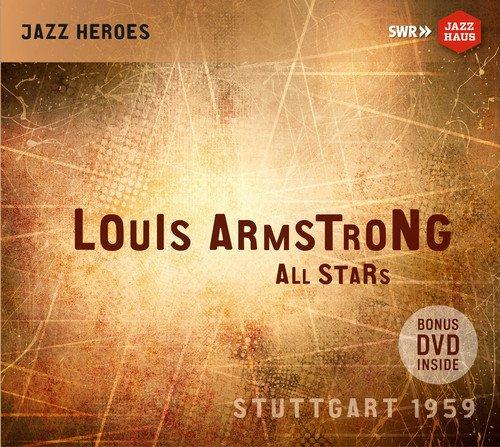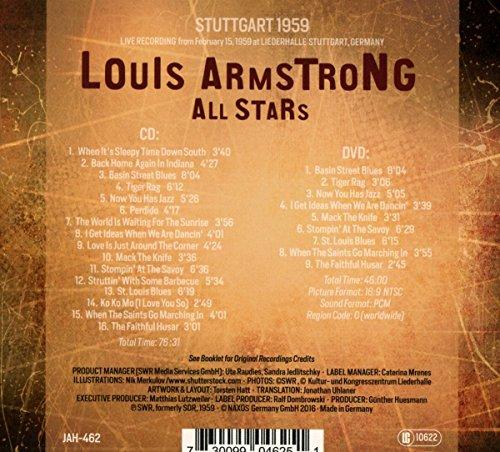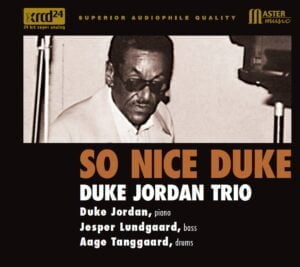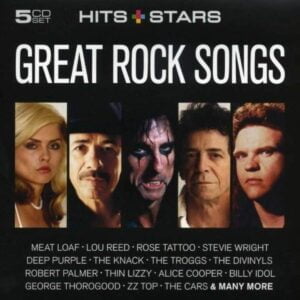Louis Armstrong (1901-1971) made music for people. It was important to him to communicate in all directions, both with his colleagues on stage and with the audience. He was also a workaholic and hardly missed an opportunity to play the trumpet, sing, and give concerts. So it came about that Armstrong developed into one of the most famous musicians of jazz in the fifties, but also beyond, although many listeners were already orienting themselves towards pop or rock & roll. The criticism accused him of Uncle Tomming, and wrinkled his nose because he didn’t want to take part in some of the innovation spurts since the bebop. Armstrong countered with the passion of the entertainer, shone alongside Ella Fitzgerald, Oscar Peterson or Duke Ellington as well as head of his modern All Stars, which have been in various lineups since 1947. He had already been a revolutionary decades earlier when, with the Hot Five and Hot Seven, he lifted jazz from the niche of accompanying music to the level of soloist art. The 1950s, on the other hand, were an ambivalent decade for Louis Armstrong. The audience loved him, but in his home country they were not allowed to attend some concerts if they had black skin. When the American State Department tried to use Louis Armstrong as Ambassador Satch for cultural image maintenance after the communist paranoia of the McCarthy era and racism that flared up again and again, he countered it with critical remarks in public. He was then given a concert without advertising and he was on the road a lot, in 1956 with an acclaimed tour through Africa, the following year through South America and again and again through Europe. In January 1959 Armstrong set off again for the Old World, seriously ill, as it turned out a few weeks later when, after a collapse in Spoleto, Italy, he was diagnosed with emphysema, which put strain on the right ventricle. Armstrong was unimpressed by this and continued to play at full speed, as he did before the incident when he and his All Stars had made stops in Stuttgart after concerts in Stockholm, Umeå, Copenhagen and Amsterdam. His proven team with Trummy Young, Peanuts Hucko, Billy Kyle, Mort Herbert and Danny Barcelona were present in the Liederhalle and a program that ranged from his signature tune When It’s Sleep Time Down South to catchy tunes like Mack The Knife. Another highlight of the evening was the appearance of the blues singer Velma Middleton, who had been part of Armstrong’s orchestra since 1942 and who did not sing their common hit Is You Is Or Is You Ain t My Baby in Stuttgart, but instead, among other things, played a powerful St. Louis blues . Incidentally, it was one of the last opportunities for the German audience to see the heavyweight vocalist on stage, because she died two years later, not least of tour exhaustion. Armstrong himself held out a little longer, but from 1964 onwards, for health reasons, only rarely used the trumpet. And the tours also became rare. The concert in the Liederhalle was one of those unadulterated moments before the stressful life of the jazz superstar began to affect his work. – Ralf Dombrowski
Επιπλέον πληροφορίες
| Είδος Μουσικής | Jazz |
|---|---|
| Record Labels | Jazzhaus |
| Προέλευση | Europe |
| Format | CD |
Εταιρία
Jazzhaus
Μπορεί επίσης να σας αρέσει…
-
Simply Analog 12 LP Antistatic Inner Sleeves White (Pack of 25)
Αξεσουάρ €15.95 Quantity Discounts -
Gatefold (2 LP) PVC Εξωφυλλα (πακέτο των 10)
Αξεσουάρ €13.90 Quantity Discounts -
Simply Analog 12 LP Antistatic Inner Sleeves Black (Pack of 25)
Αξεσουάρ €15.95 Quantity Discounts -
Vinyl Cleaner Alcohol-Free Ready-to-Use 200ml + Microfiber Cloth (Simply Analog)
Αξεσουάρ €10.00 -
12” PVC Εξώφυλλα δίσκων (πακέτο των 25)
Αξεσουάρ €16.95 Quantity Discounts  Επιλογή
Αυτό το προϊόν έχει πολλαπλές παραλλαγές. Οι επιλογές μπορούν να επιλεγούν στη σελίδα του προϊόντος
Επιλογή
Αυτό το προϊόν έχει πολλαπλές παραλλαγές. Οι επιλογές μπορούν να επιλεγούν στη σελίδα του προϊόντος βουρτσάκι Simply Analog από φυσική τρίχα
Αξεσουάρ €18.00-
Mobile Fidelity Inner Sleeves (pack of 50)
Αξεσουάρ €40.00 -
12” PP (Polypropylene) Εξώφυλλα δίσκων (πακέτο των 25)
Αξεσουάρ €8.95 Quantity Discounts
















